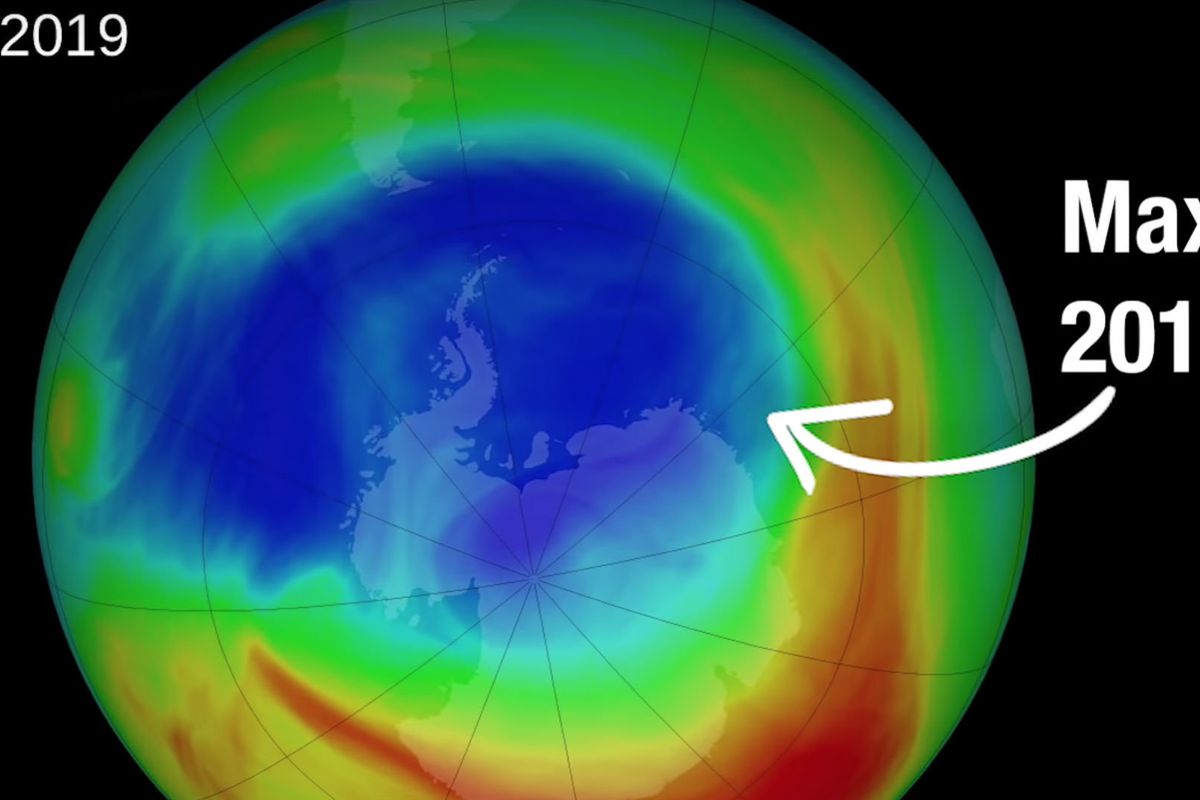The hole in the ozone layer is smaller than ever, NASA says

In some double-edged news for the planet, NASA has recently announced that the hole in the ozone layer has shrunk to its smallest size since it was detected in the mid-1980s. But there's a bit of a catch as to why it shrank in the first place, and yes it has to do with climate change.
Back in the days of glam rock and unlimited hairspray most people were totally oblivious to the damage they were doing to the atmosphere. Then in 1985 a group of buzz killers (a.k.a. scientists) released findings that showed the ozone levels in the atmosphere over the poles were depleting at an alarming rate.
And suddenly certain real estate moguls had to find another way to make the remnants of their hair bend in an unnatural direction, and proving that anyone can be a victim of their own ignorance.
The ozone layer is a part of the Earth's atmosphere made up of molecules called, wait for it, ozones! Which are basically triple strength oxygen - where the oxygen molecules we breath are made up of two oxygen atoms, the ozone layer molecules have three oxygen atoms.
And throughout Earth's history these brave tiny soldiers stood guard against the sun's radiation, specifically UV rays which are known to cause skin cancer. But when we found that they were being killed off, well, you can see how that could raise some obvious concerns. Please enjoy this nifty video from The National Geographic to learn more!
In the decades since the substances that caused the depletion were banned or prohibited (see: the Montreal Protocol) the ozone layer has shown signs of rebounding.
- The 2019 Ozone Layer Hole Is Now the Smallest on Record ... ›
- A new report shows the ozone hole is healing, but it's not all good ... ›
- NASA sees direct proof that the hole in the ozone layer is slowly shri ›
- The good news about the ozone hole is even better than you think ›
- A Warming Planet Is Helping Shrink The Ozone Hole To Smallest ... ›
- Ozone hole near South Pole shrinks to smallest size ever seen ›
- Ozone Hole Above Antarctica Shrinks to Smallest Size on Record ... ›
- 2019 ozone hole could be smallest in three decades - BBC News ›
- Why is the Ozone Hole Getting Smaller? ›
- The Earth's ozone hole is shrinking and is the smallest it has been ... ›


